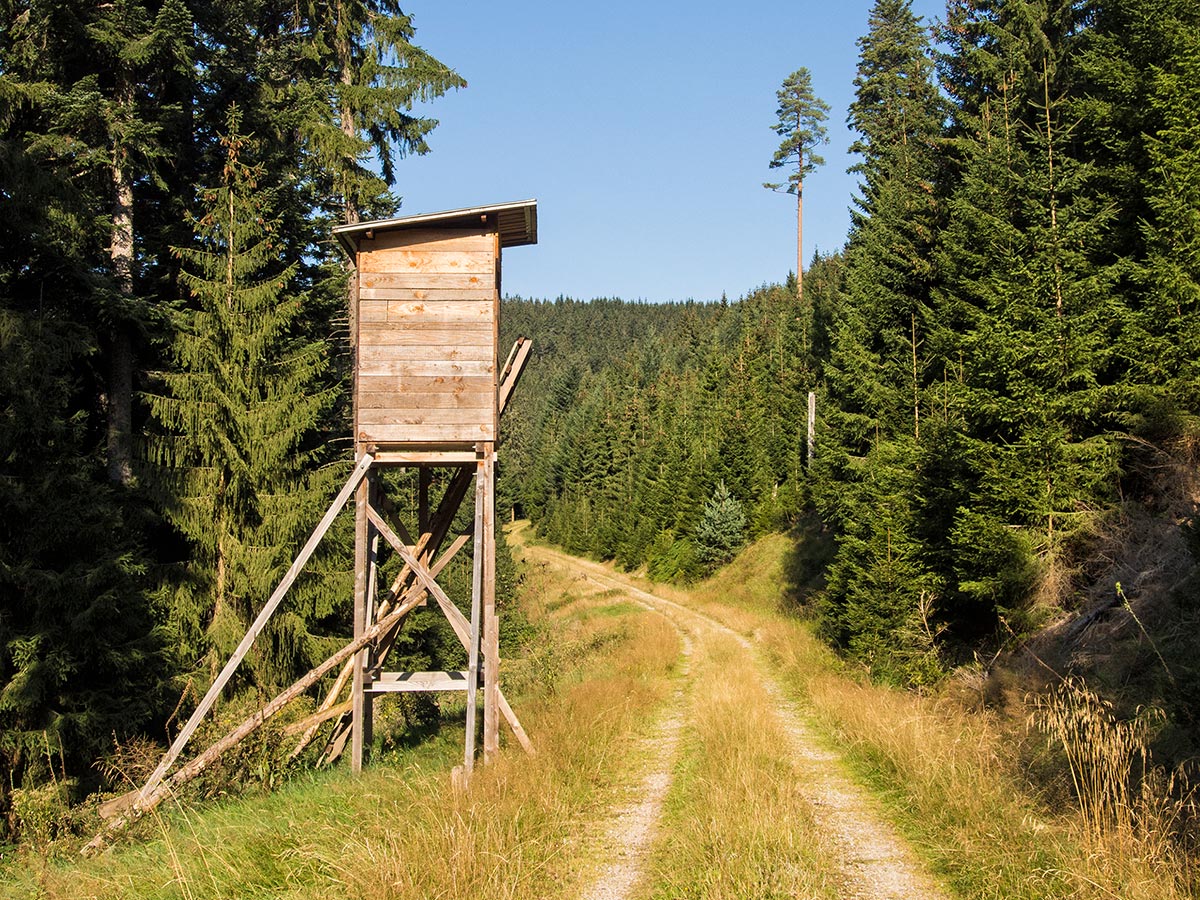NEWS POSTS AND HUNTING INFORMATION

5 Tips For Setting Up Your Treestand
The use of a treestand is rapidly becoming one of the leading ways to hunt wild game. An animal’s (deer, moose, elk) two primary defence mechanisms are lowered by the use of a treestand: sight and smell. The height of a tree stand will raise the hunter above an animal’s direct line of sight. As well, an animal’s peripheral field of vision will be less likely to catch your movement or outline. Depending heavily on weather, a hunter’s scent may also pass above the animal. So, the advantages to using a treestand are quite clear, but where do you set one up? Below is a list of 5 tips to help you get the most effectiveness out of your very own treestand.
When to set Your Treestand
The best time to either hang a new stand, or shore up any existing site, is right after the previous season has ended. One major reason for this time of year is if you’ve made mistakes during the last season, they’re fresh, and you’ll find sudden clarity in righting those wrongs. Secondly, all the sign left from the previous season is still discernible, and you can search the surrounding area without the worry of startling game.
Location
Setting your treestand in the correct location is the most critical factor throughout the entire process. The primary goal is to set up in a high traffic area that you can take advantage of while working with both wind and thermals. The animal wants to feel safe, and this safety is often found in areas with lots of cover. Focus your efforts in locating these spots, and searching for their weak points. It’s not always easy finding a perfect spot that’s also downwind; crosswind conditions will also work for intercepting wild game.
The Right Height
Ultimately, when selecting a height for your treestand, the higher the better. You want to place your stand as high as you can, without compromising your accuracy. Keep your height within your own comfort level, but make sure you go high enough to have significant leaf and limb cover.
Treestand Overuse
If the animal becomes aware of your position, it can take hours or even days for them to feel safe and return to that area. If you get caught more than once in the same location, you may want to consider setting up in a new spot.
Entry and Exit
The ability to get in and out of your treestand location is the most overlooked factor in setting up a new site. If you cannot get into your stand without spooking game, then your location may get compromised before you even had a chance to hunt from it. Knowledge of your area, either by scouting or by studying a topographic map, is useful for choosing entry and exit routes. Be creative and methodical in your approach, do not overuse your pathways, and stay covered as much as possible.
References: Rogers, Dana R. “5 Treestand Tips.” Bow & Arrow Hunting Sept. 2014: 38-43. Print.

